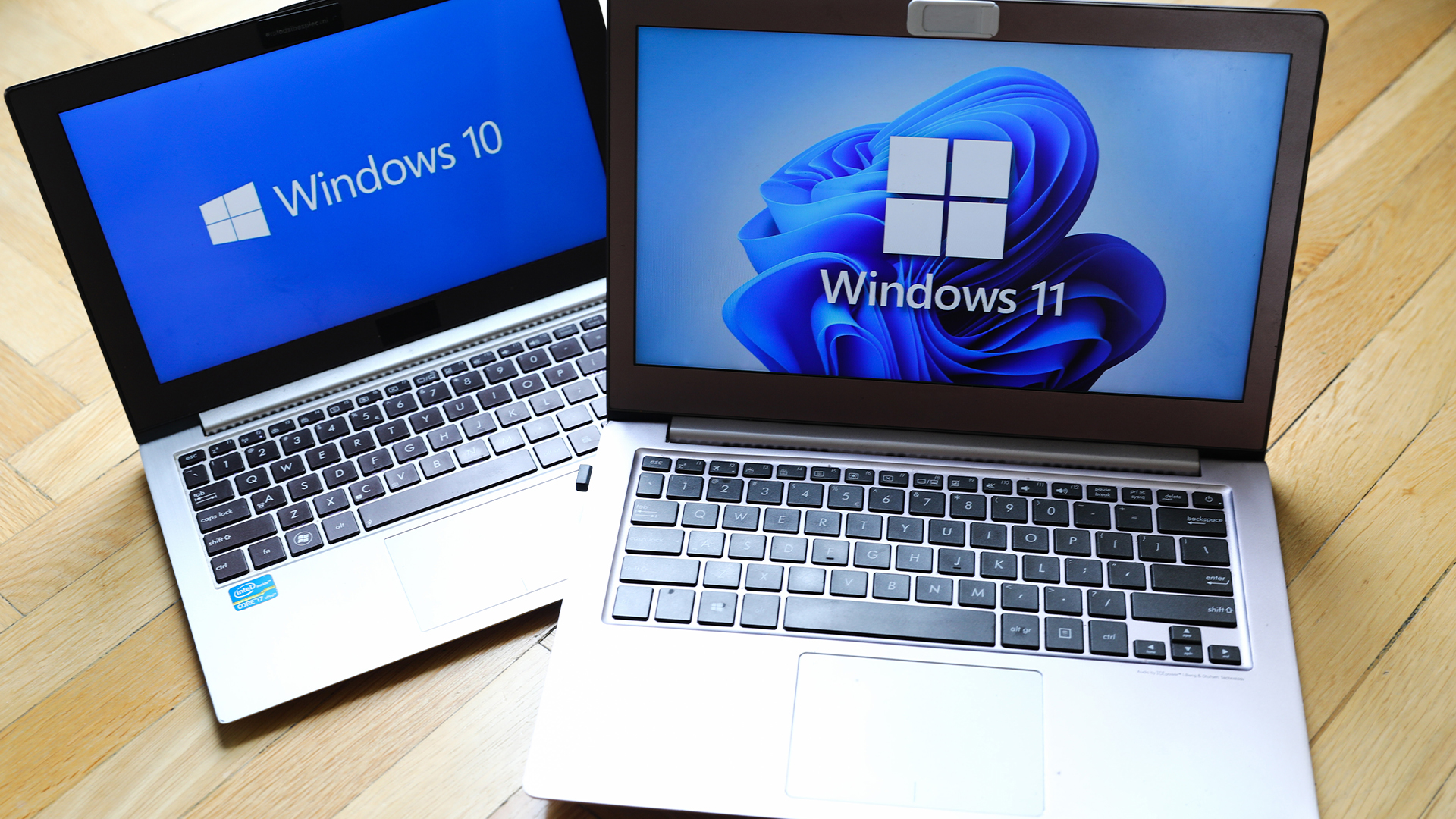What we can learn from the supercomputer revolution
The fastest systems in the world have plenty to teach us about energy efficiency, security and the benefits of using common platforms

IT Pro created this content as part of a paid partnership with AMD. The contents of this article are entirely independent and solely reflect the editorial opinion of IT Pro
At the dawn of the information technology revolution, supercomputers were the only computers, and some experts even thought things would remain that way. Even after the personal computer arrived, supercomputers remained a separate breed for some time. Now, however, there is a much closer relationship between desktop computers and the underlying hardware of the fastest systems in the world. This means that there are lessons to be learned and benefits to be gained from developments across the board.
Of course, there is still a huge performance difference between the system on your desk or in your company data centre versus the fastest around, even if the smartphone in your pocket has more processing power than was used to land a man on the moon. Supercomputers are now entering the ‘exascale generation’, delivering exaFLOPs of processing power, meaning they can calculate over 1018 IEEE 754 Double Precision (64-bit) arithmetical operations per second. The cost of these systems is beyond the reach of most organisations, in the hundreds of millions of dollars. They tend to be the domain of huge universities, governments and multinational research institutions, with resources shared out to the most ground-breaking scientific projects on the planet.
But the basis of these systems in many cases is now not so far away from corporate servers, workstations and even home desktops and notebooks. The first exascale supercomputer is the recently commissioned Oak Ridge National Laboratory’s Frontier, which boasts 136,408 AMD EPYC 7A53 CPUs with 64 cores apiece. These are special ‘Trento’ variants of the 3rd Gen AMD EPYC processor sporting the Zen 3 core, so part of the same ‘Milan’ generation that has been rolling out in data centres and cloud services recently. GPU acceleration for Frontier also comes from AMD, in the shape of the Instinct range, which isn’t a million miles away from the GPUs employed by end-user applications either – only specialised for GPU compute.
In Europe, the fastest supercomputer in the region (and third on the global Top 500 list) is LUMI, but its story is even more interesting because not only is it powerful, it has also been designed from the ground up to have the least possible environmental impact. It can deliver up to 550 petaFLOPS from its 200,000 cores, but it is powered by green hydroelectric energy. The heat it generates is captured and used to warm buildings in the area. This will be useful, considering that LUMI is located in Finland, well known for its icy winter weather. Considering COP26 agreements and the growing need to tackle climate change, as our supercomputing and general computing needs expand, it’s essential that we consider the impact this is having on the environment.
The LUMI supercomputer is Europe’s step towards its own exascale power, which is likely to be realised with JUPITER (Joint Undertaking Pioneer for Innovative and Transformative Exascale Research), which will be installed at the Supercomputing Centre at Jülich in Germany. The EU is setting aside €500 million for hardware, installation, and infrastructure. JUPITER is expected to come online after 2024, taking pride of place alongside a host of European supercomputing facilities.
The hardware inside JUPITER hasn’t been confirmed yet, but AMD’s processors could be in the running as they have been winning many of these projects due to their efficiency. Currently, five out of the top ten fastest supercomputers use AMD processors, and ten out of the top twenty. Putting this efficiency in perspective, before Frontier came along, the fastest supercomputer in the world was Fugaku in Japan. It has an average power consumption of 29MW. Frontier hasn’t been measured with the Top 500 list’s High-Performance Conjugate Gradient (HPCG) benchmark yet, but in the main Top 10 list it delivers over three times the Rpeak score and nearly three times the Rmax. Yet it only consumes 19MW, showing just how efficient its AMD EPYC-powered hardware is compared to Fugaku’s Fujitsu A64FX 48-core ARM processors. JUPITER aims to deliver exascale computing with just 15MW of power consumption.
Now that energy pricing is increasing fast, and power usage has become a major environmental concern, this kind of efficiency is paramount for the future of high-performance computing (HPC). Frontier delivers nearly five times as many petaFLOPS per MW as Fugaku, providing much cheaper, greener supercomputing. But HPC and even more everyday server applications can emulate this efficiency by adopting some of the approaches of supercomputing. The core density and efficiency of AMD EPYC processors are also available in regular pedestal and rackmount formats.
There are other benefits to supercomputers using x86-compatible CPUs like AMD’s EPYC, too. Four of the current top ten supercomputers employ non-x86 processors, but to take advantage of their tremendous processing power it’s necessary to customise applications extensively to run on their hardware. In contrast, supercomputers like Frontier and LUMI run x86 code, so while they have much greater scale and specific optimisation necessary to take advantage of this, this can be derived from software originally aimed at more modest commodity hardware.
Researchers can try out their workloads on departmental servers or local data centres to iron out the bugs before letting them loose on the supercomputer. Indeed, in the run up to the arrival of Frontier, this is what researchers have been doing, via the Center for Accelerated Application Readiness, which has provided access to test nodes for eight scientific teams. They were able to test their workloads including for astrophysics, molecular dynamics, photon science and biological systems.
This commonality of code also encompasses the supercomputer GPUs, which like the CPUs have enough in common with less specialised hardware to make it possible to test workloads on non-supercomputer hardware. Software such as AMD’s HIP development environment and ROCm drivers even make it possible to bring GPU code across from competitor hardware with modest amounts of effort.
Supercomputer code based on workloads such as computational fluid dynamics (CFD) or machine learning with TensorFlow can deliver incredible results, for example calculating vehicle aerodynamics and AI models respectively. These results can be replicated at a smaller scale on less potent systems using code from the same family. What is learned about these modern tasks in the supercomputing environment can pay huge dividends even for those without access. Supercomputers are also being deployed to harden cybersecurity, testing scenarios and finding protective measures that can be rolled out across governmental and commercial organisations.
At their birth, supercomputers were deployed to handle workloads that were not possible on any other device. They still have unprecedented scale compared to desktop systems and regular data centres. But there is much more of a continuum between the two realms than ever before, with particular emphasis on the environmental impact of computing. The efficiency of the latest supercomputers is available to every level of computing, thanks to similar architectures being available for smaller data centres as well. We can also benefit from software aimed at supercomputers that can be run on generic hardware – and vice versa. Rather than just being rare, specialised machines, the supercomputing revolution is providing learning across the full spectrum of data-processing activities.
IT Pro created this content as part of a paid partnership with AMD. The contents of this article are entirely independent and solely reflect the editorial opinion of IT Pro
Sign up today and you will receive a free copy of our Future Focus 2025 report - the leading guidance on AI, cybersecurity and other IT challenges as per 700+ senior executives
ITPro is a global business technology website providing the latest news, analysis, and business insight for IT decision-makers. Whether it's cyber security, cloud computing, IT infrastructure, or business strategy, we aim to equip leaders with the data they need to make informed IT investments.
For regular updates delivered to your inbox and social feeds, be sure to sign up to our daily newsletter and follow on us LinkedIn and Twitter.
-
 Why hardware matters when it comes to moving from AI fiction to AI fact
Why hardware matters when it comes to moving from AI fiction to AI factSupported GPUs, networking, and smart devices are as much the story of AI success as software
-
 Embedded processors in industry, cloud, and beyond
Embedded processors in industry, cloud, and beyondSupported From the edge to power grids, embedded processors keep data flowing for all enterprises
-
 What enterprises need to be Windows 11 ready
What enterprises need to be Windows 11 readySupported Hardware purchasing will play a key role in delivering success during the Windows 11 migration rush
-
 Should AI PCs be part of your next hardware refresh?
Should AI PCs be part of your next hardware refresh?Supported AI PCs are fast becoming a business staple and a surefire way to future-proof your business
-
 How IT decision makers can prepare for the AI Age
How IT decision makers can prepare for the AI AgeSupported Whether it’s the hardware in your office or what’s powering your virtual machines, the right processors are the key to success
-
 Why the CPU you chose is the key to Windows 11
Why the CPU you chose is the key to Windows 11Supported The end of Windows 10 is on the horizon – it’s time to upgrade to an fTPM-protected processor
-
 AMD Advancing AI live: All the news and updates as they happened
AMD Advancing AI live: All the news and updates as they happenedLive Blog ITPro has been live on the ground at the AMD Advancing AI conference in San Francisco this week – here's everything we learned in the big keynote with CEO Lisa Su
-
 AMD takes the wraps off new Instinct MI300X chips for AI workloads
AMD takes the wraps off new Instinct MI300X chips for AI workloadsSupported The data center-focused hardware will enable customers to run high-performance AI and HPC workloads



